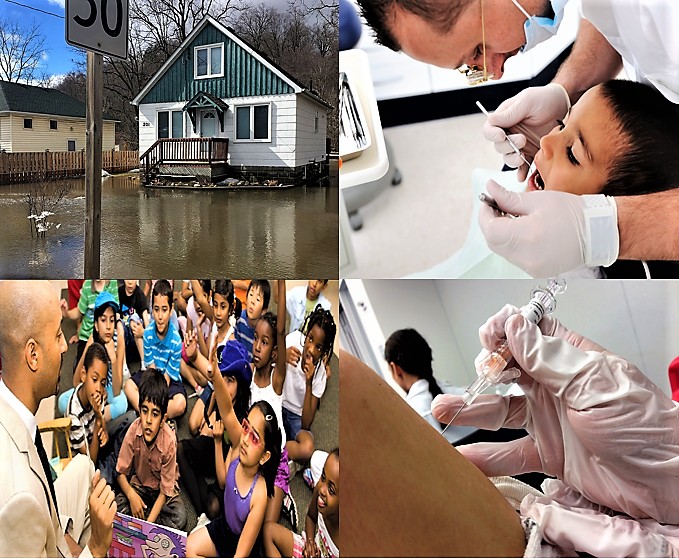
“The province” is “putting council in a very difficult position,” says senior Peel Region financial planner
Budget uncertainty continues for Peel Region government, with recent estimates showing the bottom line will be taking a $39-million hit over the next three years as a result of provincial funding cuts.
The latest numbers, presented to council last week, follow a string of budget updates from regional staff, who have been grappling with the potential impact of the provincial budget Premier Doug Ford presented in April. Since receiving widespread condemnation of that budget, which made sweeping cuts to funding for municipalities, the governing PCs have backpedalled on many of the cuts and delayed others, while creating turmoil for municipal financial officers.
The sweeping funding cuts affected everything from policing to public health to child care.
“So what’s changed since July? Child care,” explained Norm Lum, Peel’s director of business and financial planning, in last week’s presentation. “The provincial plan, which was 100 percent funded by the province, will now commit to 80 percent of the 2019 funding. The province has made [replacing] the remaining 20 percent gap discretionary, putting council in a very difficult position — to have to actively decide to increase funding in order to maintain service levels.”
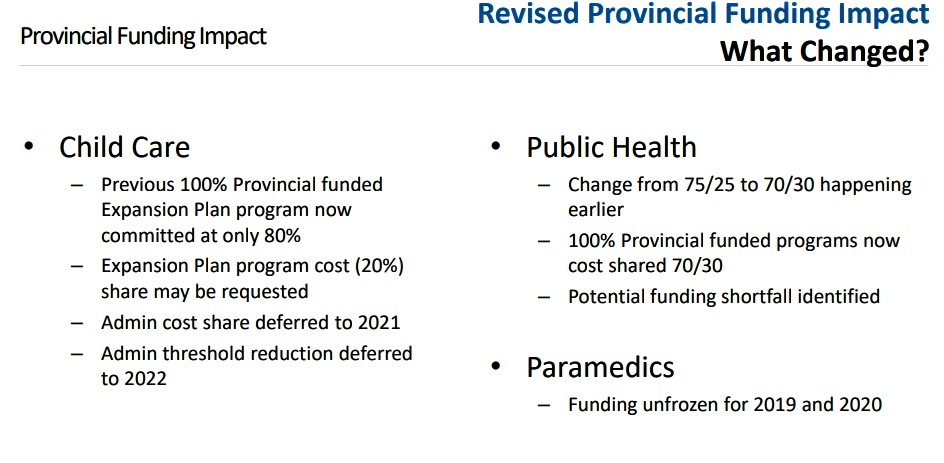
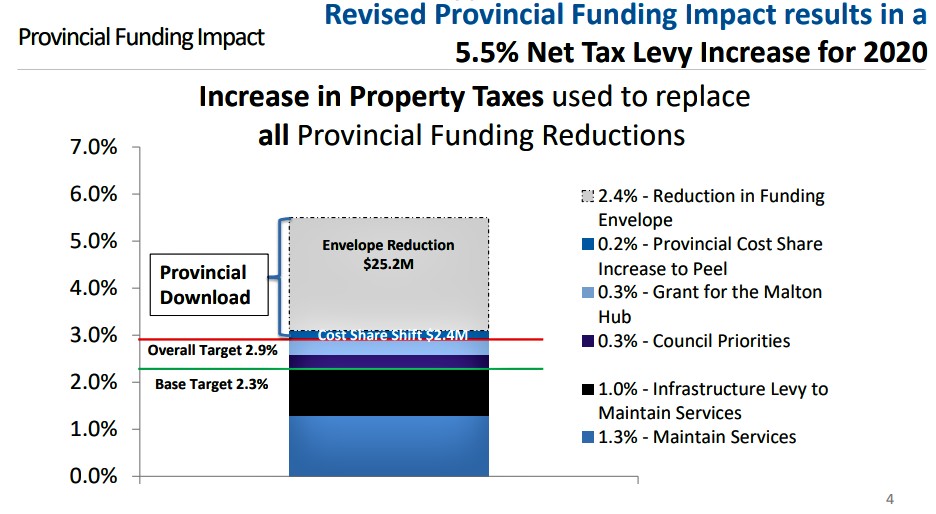
The uncertainty causes problems both short- and long-term. Not only do the cuts force councillors to choose between reducing services or saddling taxpayers with a heftier burden, but financial staff are unable to plan for future projects and programs amid questions about how much money will be available in the years ahead.
“I do want to add that these figures are based on what we currently understand today. And it’s been very challenging trying to assess and interpret what they’ve announced — because there’s very little details,” Lum said. “We probably won’t know what the ultimate impact will be until we receive the funding letters, which are to be coming out in fall or late fall.”
As of July 11, the region’s experts said, replacing all the lost funding would mean increasing the region’s portion of the property tax bill by 6.3 percent. In addition, Lum’s presentation noted that public health programs currently funded 100 percent by the province will now be cost-shared 70/30 between the province and region. Funding for paramedics was recently unfrozen for 2019 to 2020.
To avoid putting the entire 6.3 percent increase on the tax bill, the region will need to do some clever financial maneuvering. Peel plans to increase the tax levy — an increase in property tax assessments — by 3.7 percent between 2020 and 2022, just to make up the loss from the provincial cuts.
That means the tax bill for an average home in Peel will go up by $49 in 2020, and $70 per year in the following two years, data from the region shows.
Impact of the Original Cuts Announced this Spring
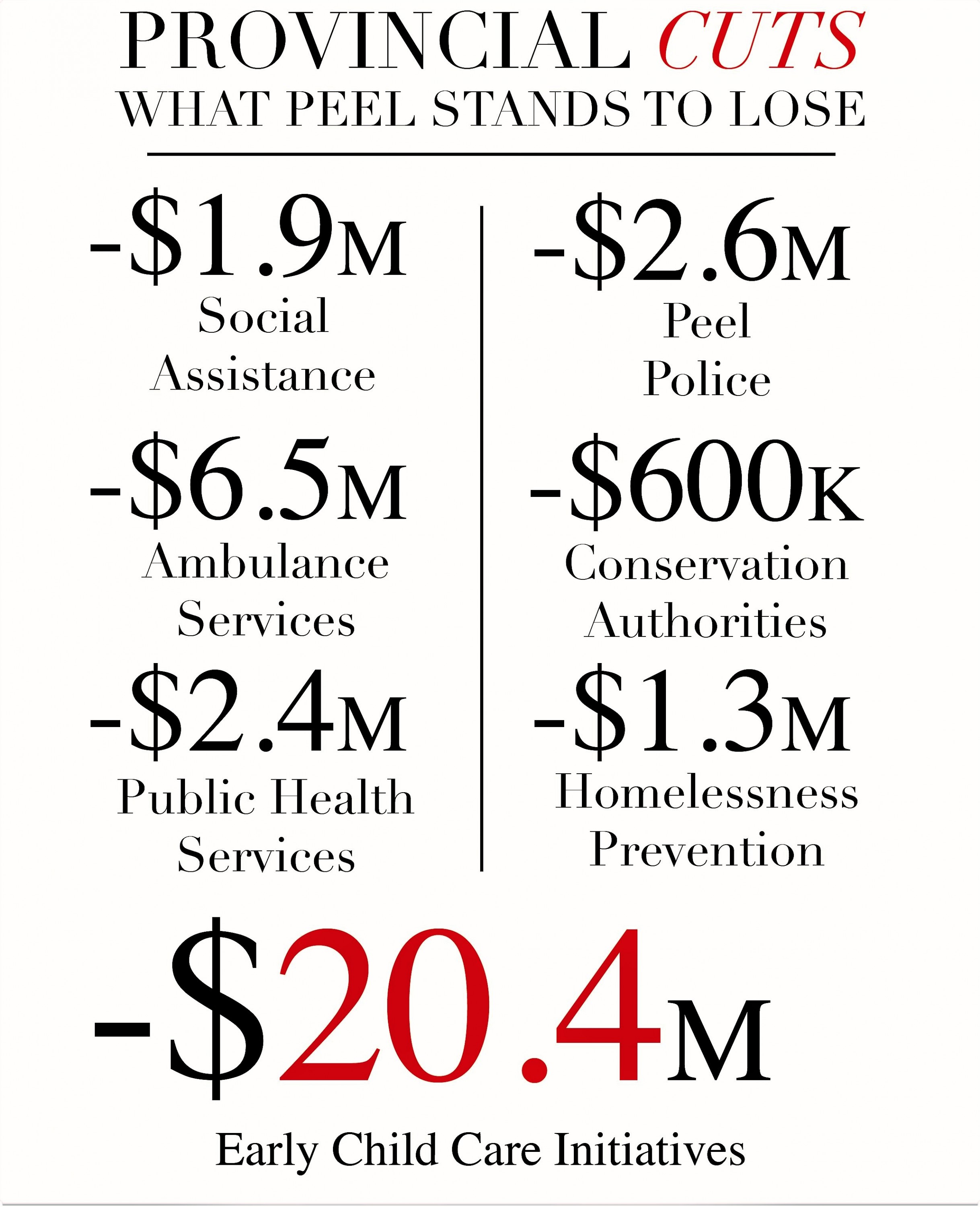
Another huge question mark — and additional headache for planners — involves whether Peel Region will even still exist three years from now. The province is currently reviewing the regional government model in Ontario, the results of which are expected this fall. If Ford decides to dissolve the region, giving Mississauga the independence it so desperately craves, the whole financial structure will once again be thrown into chaos.
A scenario in which Mississauga and Brampton become independent municipalities will create a storm of questions, as services and responsibilities previously carried by the region, often with shared infrastructure, will be handed down to the two cities. This will result in a whole new line of budget questions and funding impacts.
Mississauga Ward 2 Councillor Karen Ras weighed in on Lum’s presentation Thursday, describing it as “a somewhat good-news update that the impacts aren’t as deep as we were thinking.” But she suggested there might be ways to spread the pain around a little more evenly. Lum will return to council on Sept. 26 with a look at further options and risks to address the funding reductions and to discuss the future effects on services.
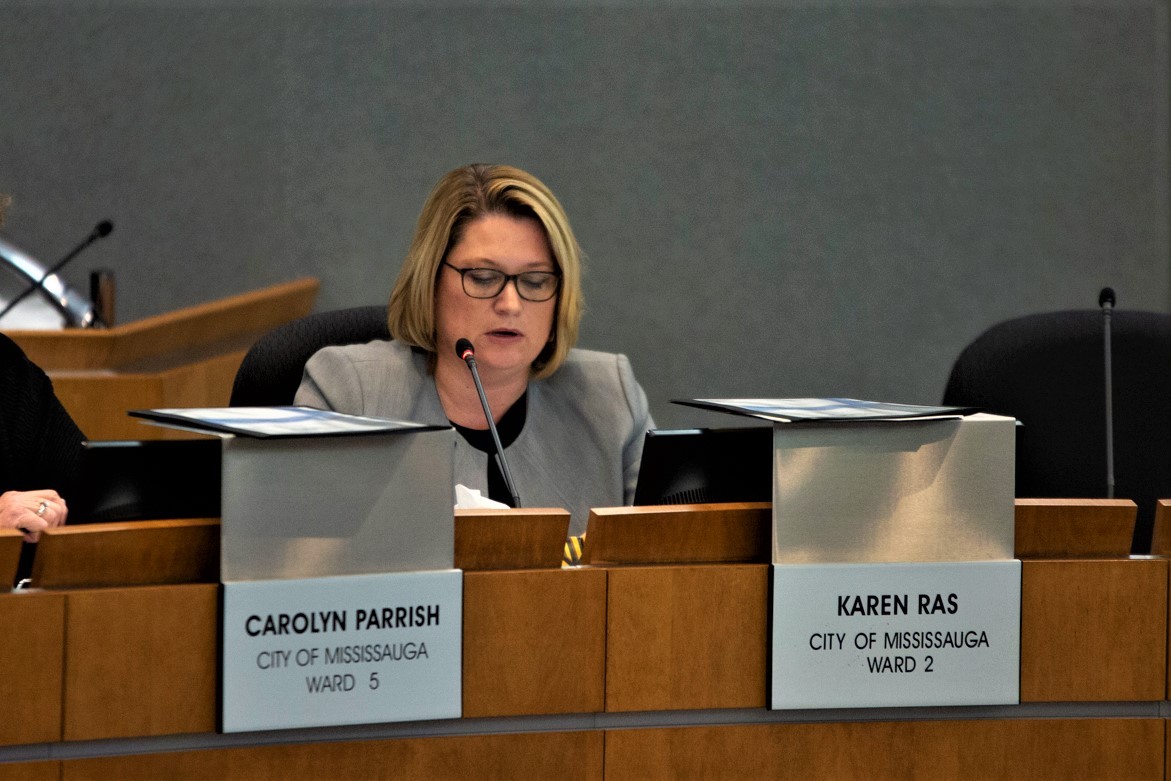
Mississauga and Regional Councillor Karen Ras
“Are we just looking at options for service levels in these particular areas? Or, is there an opportunity to look at, perhaps through the upcoming budget process as well, service levels in other areas, so you can spread the impacts more across the board, rather than just as individual service areas?” Ras asked Lum.
“We’re bringing forth what we think best balances the risk, based on what we see. But certainly, [we can do so] if council can direct us to go look elsewhere too,” Lum replied.
Email: [email protected]
Twitter: @dancalabrett
Submit a correction about this story


